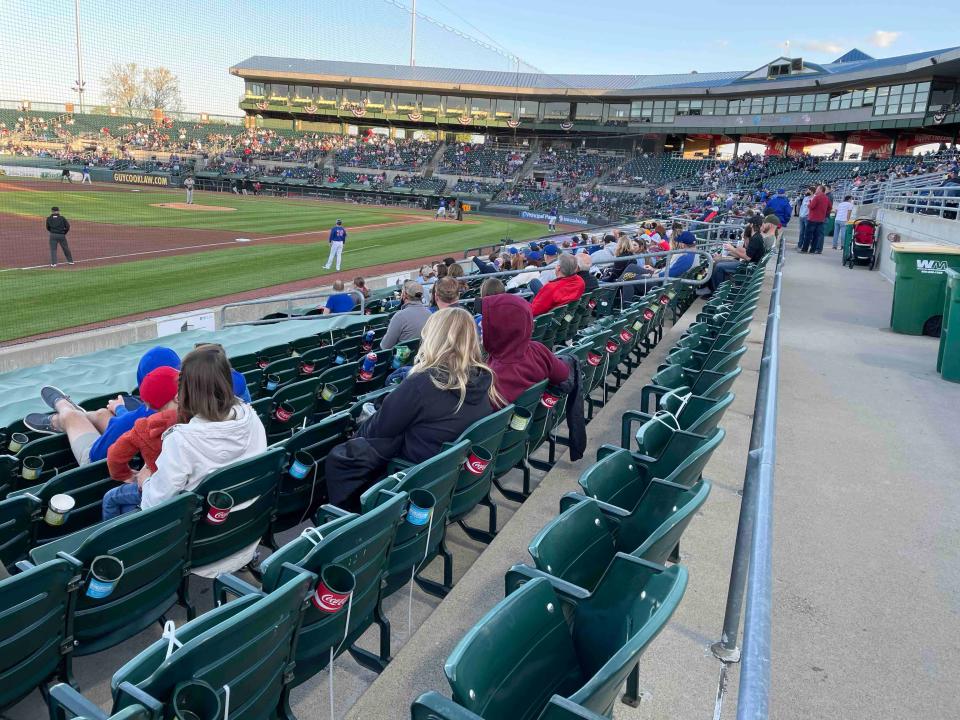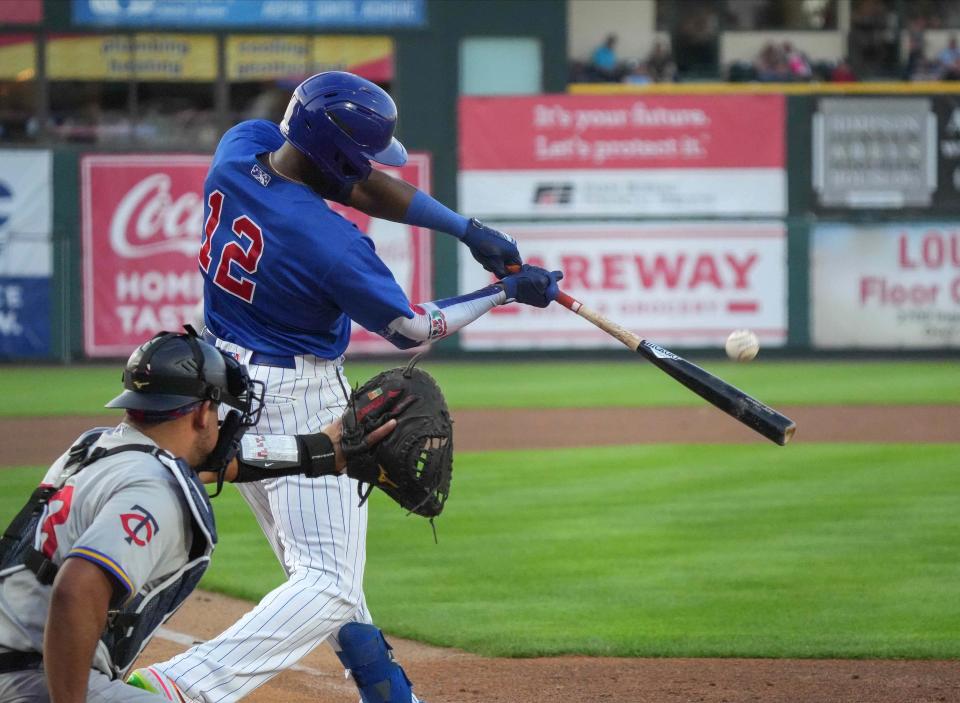Robot umpires are coming to Principal Park. Here's what it will do for the Iowa Cubs.

As Sam Bernabe wandered around Roger Dean Chevrolet Stadium in Jupiter, Fla., last summer, one of baseball’s biggest changes was quietly taking place, unbeknownst to many of the fans around him.
The home-plate umpire of the Single-A minor-league game was being told through an earpiece whether each pitch was a ball or strike.
“You would literally not know that anything was going on if you didn’t know it was going on,” said Bernabe, the Iowa Cubs' president and general manager.
The automated balls and strikes (ABS) system that Bernabe got a first-hand look at last summer is coming to his home stadium this season. The Iowa Cubs will have the ABS system − which some have called robot umpires − calling balls and strikes part of the time this summer.
The Cubs open the season Friday night against the Columbus Clippers at Principal Park at 7:08 p.m.

“I haven’t talked to anybody that thinks it’s a bad thing,” Bernabe said. “There are some that may be indifferent about it. But I haven’t talked to anybody on our side of the business that thinks it’s a bad deal.”
How does the ABS system work to call strikes or balls?
The ABS system, which has been tested throughout Minor League Baseball, will be used in all Triple-A stadiums this summer, including Principal Park in Des Moines. The park will be outfitted with Hawk-Eye cameras that will track pitches and determine location of the strike zone, which is a 19-inch, two-dimensional rectangle set on the middle of the plate.
If any part of the baseball touches the strike zone, the pitch is called a strike. If it doesn’t, it’s a ball. An ABS operator positioned in the park will track all the pitches on a computer and then radio it back to the home plate umpire, who will have an earpiece in at all times. The home-plate umpire then signals if it’s a strike (or no signal if it's a ball) for everyone in the stadium to see.
More:10 Chicago Cubs prospects who could play for the Iowa Cubs in 2023
Bernabe got an up-close look at the system when he took in a game while visiting his son, Nick Bernabe, who works for the Jupiter Hammerheads. Sam Bernabe was amazed at how well the ABS system functions and how quickly information was relayed to the home-plate umpire.
“It’s instantaneous,” Bernabe said.
Bernabe expects fans won't even notice a change when it's implemented. The ABS system will be used Tuesday through Thursday at Principal Park.
More:Marquee Sports Network to televise 15 Iowa Cubs games
The biggest changes fans may notice are likely to happen when ABS is not being used in games Friday through Sunday. During those games, umpires will detremine balls and strikes on their own. But each team is allowed three challenges. The challenges must come from the pitcher, catcher or hitter. Win the challenge, and the team retains the ability to challenge. The Principal Park videoboard will then show a replay of the pitch for fans to see, just like tennis does with balls in or out of bounds. Bernabe believes it has the potential to add to the on-field excitement.
“I think the fans will enjoy it, quite frankly,” Bernabe said.
Will the robot replace human umpires?
Home-plate umpires will still be a major part of the action, signaling the balls and strikes and staying behind the dish to monitor things like check swings, foul balls and plays at the plate.
“The home-plate umpire has 50 things to do every pitch,” Bernabe said. “So all you’re doing is eliminating for him what’s designated as a ball or what’s designated as a strike.”
More:Can't watch the big game? These lawmakers want to end Iowa's Major League Baseball blackouts
The change has brought mixed reviews from baseball fans who say the move takes some of the "human element" out of the game in order to make the strike zone more consistent. It is widely believed that Major League Baseball will adopt the system in the years to come. Many of MLB's rule changes have been tested at the minor-league level, including the new pitch clock and larger bases.
“They wouldn’t be doing them here if they didn’t have some intention of doing it at the big-league level, in my opinion,” Bernabe said.
More:Chicago Cubs option prospect Brennen Davis to Triple-A Iowa Cubs
Tommy Birch, the Register's sports enterprise and features reporter, has been working at the newspaper since 2008. He's the 2018 and 2020 Iowa Sportswriter of the Year. Reach him at tbirch@dmreg.com or 515-284-8468. Follow him on Twitter @TommyBirch.
This article originally appeared on Des Moines Register: How 'robot umpires,' automated strike zone will work at Principal Park

